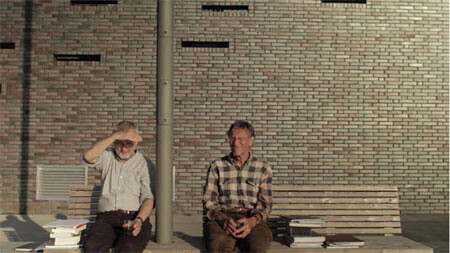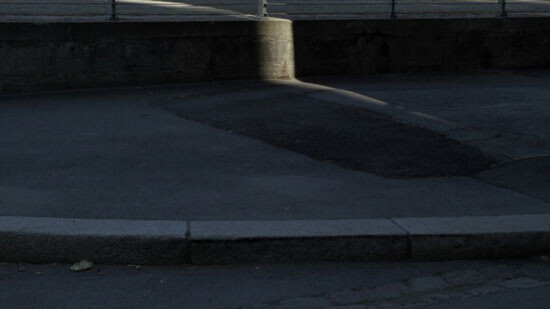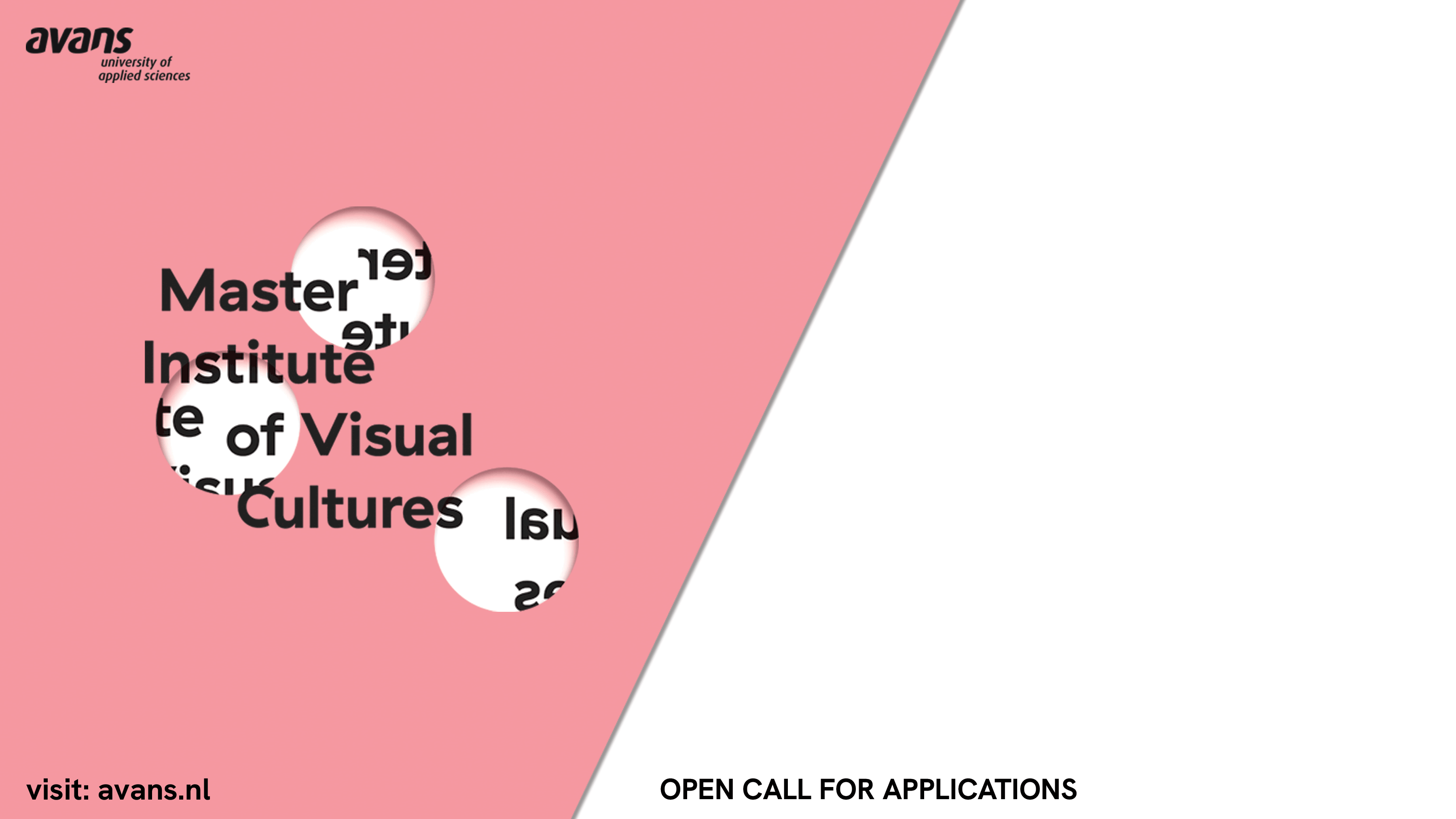We are taught that the sun shines on everyone. The sun is one of the best things in life, and the best things in life are free, or so we’ve heard. But that’s not how it is. The sun belongs to someone. The clouds belong to someone. The roads, the trees, the houses. The sound of footsteps on the street. It’s all for sale. You can buy the smell of wet asphalt, the dew on the lawn, the roar of the city, the sparkling sea. The splashes of sunlight on the bedroom wall in the morning that you saw for the first time when you were too young to understand what they were, but which you have never forgotten. Who wouldn’t want to give their children images like these, memories like these? All you need is a bedroom that the sun shines into and, of course, that you can buy. You get it when you buy a cabin on Koster, a house at Nordberg, a penthouse in Oslo. We know the truth in this, even though we have always been told that things are otherwise. Ever since our industrial cities were built, and even before that, the rich have lived in sunlight and the poor have lived in the shadows—in narrow streets, in courtyards without sunlight, in a room with a view of the neighboring alley.


In the same way that you buy an apartment, if you have money, you can also buy an entire plot of land, a vacant lot next to the sea or right in the center of town, where you can build streets, squares, and plazas—deep, narrow alleys where the sun slants in at certain times, in winter so low that its rays shine straight into your eyes, in summer high, high above the roof terrace. And at these times you can follow the shining disc for a while before it disappears around the corner and the sky begins to grow dark. All this can be planned: other people’s experiences and feelings, other people’s encounters with the sun as they walk through alleyways built by somebody else.
Someone decided that this façade should be made of glass, and someone put that road in front of it. Someone planned for these reflections of the passers-by to occur on this axis, in this direction, with this shadow, this strip of light. Someone wants something from our movements. Perhaps they pictured the contrast between our warm, living bodies and these vast, cold surfaces. Perhaps they calculated that these elements should combine to make the architecture even more dominant, to make us feel even smaller deep down inside. And so now we are part of their plan.
It is very likely that there were many people involved in these decisions, and that certain democratic processes were followed. But there might as well have been one person behind it all. Or perhaps not even a person, but more like a will, a hand, a thing. A big “It.” “It” decided how long and wide the road should be, how dark the shadows. How small we should feel. And they, or “It,” intended that we should enjoy this feeling, that we should be overwhelmed by it. We should be reminded that there is something which is more than we are, something that will remain once we are gone. You look up at the façades, up and up, and you feel like a child at the feet of a giant—a giant who leans over and looks you in the eye with his blank windows.
TWO ELDERLY ARCHITECTS SIT ON A BENCH AT SØRENGA, A NEW RESIDENTIAL AREA IN OSLO FORMERLY PART OF THE HARBOR. IT IS SUMMER AND THE EVENING SUN SHINES BRIGHTLY.
ARCHITECT 1
We have been asked to talk about the history of sunlight.
ARCHITECT 2
In Scandinavian urban planning.
ARCHITECT 1
(Reading aloud)
‟In the places where life is hardest and where joy is least,” as the architect Johannes Nissen wrote in 1908.
ARCHITECT 2
(Reading aloud from another book)
‟In the short time when it is possible to enjoy the sun, one would hope to have the opportunity to do so,” as the architect Jan Gehl wrote in 1971.
ARCHITECT 1
We architects have struggled with this for more than a hundred years.
ARCHITECT 2
(Picking up a code of law)
With the Building Act of 1924, for the first time it became mandatory: ‟new residential dwellings must have sunlight.” (Pause.) That is, all new houses or apartments. Not just some.
ARCHITECT 1
(Holding a diagram)
When new residential areas were built in Scandinavia after the war, the space between housing blocks was regulated so that each apartment would get at least five hours of sunlight on the spring equinox.
ARCHITECT 2
(Picking up a leaflet)
The Swedish Housing Board’s guidelines from 1960, “Good Housing Today and Tomorrow,” state that ‟playgrounds should receive sunlight between 8:00 a.m. and 5:00 p.m.”
ARCHITECT 1
(Holding an early city plan proposal)
The “Proposal for Neighborhood Renewal in Oslo” from 1964 states that ‟any development plan including dwellings that receive less than three hours of sunlight on the spring and autumn equinoxes should be rejected.”
ARCHITECT 2
In the urban regeneration projects of the 1980s, the city demolished outbuildings in backyards to give children the opportunity to play in the fresh air and sunlight.
ARCHITECT 1
And in the State Housing Bank’s minimum standard, revised in 1992, it states that ‟dwellings should not be only north-facing.”
ARCHITECT 2
Again, this applies to all housing of all kinds.
(Pause)
ARCHITECT 1
Everyone was entitled to sunshine and light.
ARCHITECT 2
The basic pleasures.
ARCHITECT 1
But these regulations are gone now.
ARCHITECT 2
Our basic needs are not so basic anymore. The legislation has slowly crumbled.
ARCHITECT 1
Not even the architects protested.
(Pause)


ARCHITECT 2
Now it’s about creating differences, not similarities.
ARCHITECT 1
The greatest possible differences within each project.
ARCHITECT 2
Even within the same building.
ARCHITECT 1
Up there are big penthouses with sea views in all directions.
ARCHITECT 2
And down there are small basement flats with a view of the rubbish bins.
ARCHITECT 1
To give more people the opportunity to get into the housing market.
ARCHITECT 2
It’s the new social housing policy.
(Pause)
ARCHITECT 1
But that is certainly not the case down here in the harbor.
ARCHITECT 2
No, here the apartments cost over 70,000 kronor per square meter.
ARCHITECT 1
In the daily newspaper here, a researcher from the architecture school is asked what he thinks about the prices in Sørenga. He answers, ”If you want lower house prices, you should be pleased to see any new homes being built. New housing in the Fjord City releases other properties and helps to reduce the pressure somewhat.”
(Pause)
ARCHITECT 2
Yes, we should be happy that they’re building rooms with views, so that those who don’t get paid so well can live without.
ARCHITECT 1
We should be be happy that some people can choose apartments with light, while others may choose darkness.
ARCHITECT 2
We should be happy that the rich are here, so that the poor can walk in their shadow.


The exhibition “The rich should be richer” was shown at Kunsthall Oslo, which is located in one of those high-rise buildings in Oslo’s new developments that have penthouses on their upper floors. Originally presented as film material, the exhibition looked at the ownership of sunlight in the late-capitalist metropolis and the association, both metaphorical and real, between poverty and darkness. In connection with the show, I proposed a banner for the façade of Oslo Central Station, where very different social groups of the district meet—Oslo’s poorest, junkies, Roma, the homeless, along with tourists and privileged residents. The banner text read “The rich should be richer,” along with a photo of the view from the roof terraces of Bjørvika. This project was ultimately halted, without room for appeal or compromise, by the developers of the docklands.


